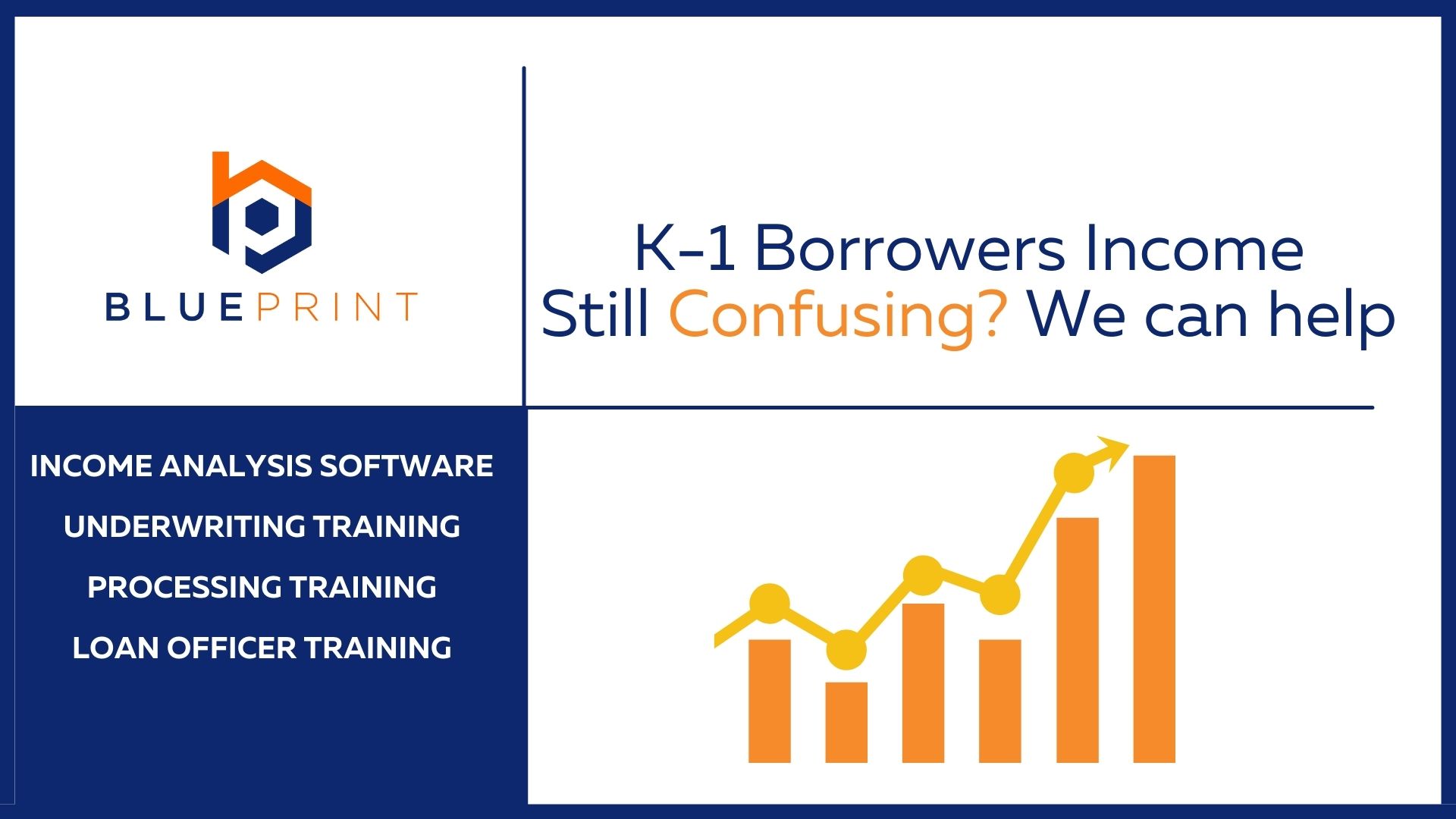K-1 income for self employed borrowers is one of the most asked questions we receive in our inbox. We understand, it’s complicated, and to be honest we are mortgage professionals not tax experts. But since self employed individuals make up a good percentage of the possible borrowers in the market, we definitely need to understand how to determine K-1 income properly for these borrowers.
Three key considerations to keep in mind.
The K-1 is a tax document NOT an income document
The mortgage business is concerned about the income you have to pay the mortgage, not what your taxable income is. This might seem like a play on words, but it is not. Lets review an example of an employed borrower to better illustrate the point that there are major differences between taxable income and spendable income.
Borrower’s VOE lists their salary as $100,000 per year.
Borrower’s W-2 box 1 says their “wages, tips, other compensation” is $90,000
Does the borrower earn $90,000 or $100,000? The answer is $100,000.
This is because the W-2 outlines taxable income not spendable income.
The common reasons the W-2 figure is less in box one versus what the VOE states is due to common deductions like contributions to your 401K or medical benefit payments which are all deducted from an employee’s pay “pre tax.”
We have found that quite a few folks ponder the taxable-versus-spendable question on the K-1 forms. What we see is box 1 on the K-1 states $100,000 and many mortgage professionals use that number, BUT for FNMA and FHLMC you might be missing a major point. That point is we now have to verify if the borrower did actually receive that income. The IRS will definitely tax you on that income, but in reality you could have had less or more income than what K-1, Lines 1,2,and 3 say.
Validating the receipt of the income
Fannie and Freddie require that sellers confirm the receipt of their K-1 income (and cash flow adjustments). They require this validation using either of the methods below:
- Distribution of the income shown on the K-1 OR
- Passing a liquidity test.
For more information:
- Fannie Mae B3-3.07 https://selling-guide.fanniemae.com/1035495241
- Freddie Mac 5304.1 https://guide.freddiemac.com/app/guide/section/5304.1
When training teams we ask… “Did the borrower actually pay themselves (evidence by distribution of that income) OR does the liquidity test show the borrower COULD have paid themselves?
NOTE: FHA / VA/ USDA don’t really address K-1 Income for self employed borrowers as strongly as Fannie and Freddie. It is our opinion that if you are originating a government loan you can use what is shown on the K-1 lines 1, 2 ,3 and guaranteed payments to partners (line 4C on the 1065) without validating the receipt of the income.
Four steps to validate K-1 income for self employed
Using this workflow is key in determining K-1 Income for Self Employed Borrowers, we recommend the following:
- Evaluate the business stability using the 1088 form. IF the business is stable then move to step two.
- Evaluate the personal income earned by the borrower by adding up W-2, K-1 lines 1, 2, 3, and 4C if applicable.
- Evaluate the cash flow adjustments based on the borrower’s percentage of ownership and either add or subtract it from the personal income.
- Confirm the receipt of income using either the distributions noted or liquidity test.
So are you still confused? If you are, rest easy, you are not alone. This is the reason why we built IncomeXpert for the mortgage industry. IncomeXpert knows the rules, completes the required calculations, and cross checks the guidelines all in a few seconds. If you want to see our products in action, request a demo here:
[/fusion_text][/fusion_builder_column][/fusion_builder_row][/fusion_builder_container]

